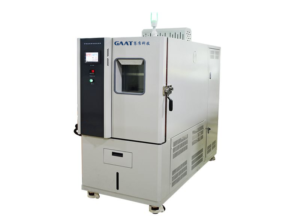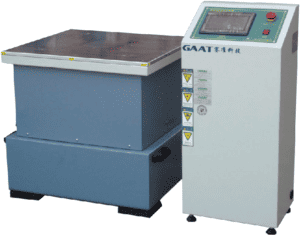At our company, we specialize in the design and manufacture of high-quality temperature chambers that are used in a variety of applications across various industries. One of the questions we often receive from our customers is about the differences between linear and nonlinear temperature chambers, and which one is better suited for their specific needs.
In this article, we’ll provide you with a comprehensive overview of the key differences between linear and nonlinear temperature chambers, including their operation, applications, advantages, and disadvantages. By the end of this article, you’ll have a clear understanding of the differences between these two types of temperature chambers and which one is the right choice for your application.
Linear Temperature Chambers
A linear temperature chamber is a type of temperature chamber that operates on a linear heating and cooling system. This means that the temperature inside the chamber is gradually increased or decreased at a constant rate over a set period of time. Linear temperature chambers are commonly used in applications where a gradual change in temperature is required, such as in the testing of electronic components, materials, and products.
How Linear Temperature Chambers Work
Linear temperature chambers work by using a heating and cooling system that is designed to maintain a constant rate of change in temperature. This is achieved by using a temperature control system that regulates the amount of heat and cold air that is introduced into the chamber. The rate of change in temperature is determined by the temperature control system and can be adjusted to meet the specific needs of the application.
Applications of Linear Temperature Chambers
Linear temperature chambers are commonly used in applications that require a gradual change in temperature over a set period of time. These applications include:
– Electronic component testing
– Material testing
– Product testing
– Environmental testing
Advantages of Linear Temperature Chambers
Linear temperature chambers offer several advantages, including:
– Accurate temperature control
– Precise rate of change in temperature
– Suitable for long-term testing
– Can be used for a wide range of applications
Disadvantages of Linear Temperature Chambers
Linear temperature chambers also have some disadvantages, including:
– Limited temperature range
– Limited ramp rate
– Limited cooling rate
– Limited heating rate
Nonlinear Temperature Chambers
A nonlinear temperature chamber is a type of temperature chamber that operates on a nonlinear heating and cooling system. This means that the temperature inside the chamber can be changed at varying rates over a set period of time. Nonlinear temperature chambers are commonly used in applications where a rapid change in temperature is required, such as in the testing of electronic components, materials, and products.
How Nonlinear Temperature Chambers Work
Nonlinear temperature chambers work by using a heating and cooling system that is designed to maintain a variable rate of change in temperature. This is achieved by using a temperature control system that regulates the amount of heat and cold air that is introduced into the chamber. The rate of change in temperature is determined by the temperature control system and can be adjusted to meet the specific needs of the application.
Applications of Nonlinear Temperature Chambers
Nonlinear temperature chambers are commonly used in applications that require a rapid change in temperature over a set period of time. These applications include:
– Electronic component testing
– Material testing
– Product testing
– Environmental testing
Advantages of Nonlinear Temperature Chambers
Nonlinear temperature chambers offer several advantages, including:
– High-speed temperature change
– Wide temperature range
– High cooling rate
– High heating rate
Disadvantages of Nonlinear Temperature Chambers
Nonlinear temperature chambers also have some disadvantages, including:
– More difficult to control temperature accurately
– May cause thermal shock to the test object
– Unsuitable for long-term testing
– Limited applications
Conclusion
In conclusion, the key differences between linear and nonlinear temperature chambers are their heating and coolingpatterns, applications, advantages, and disadvantages. Linear temperature chambers operate on a linear heating and cooling system, providing a gradual change in temperature suitable for long-term testing and a wide range of applications. Nonlinear temperature chambers, on the other hand, operate on a nonlinear heating and cooling system, providing a rapid change in temperature suitable for high-speed testing, but with limited applications.
When choosing between a linear and nonlinear temperature chamber, it is essential to consider the specific needs of your application. If you require a gradual change in temperature for long-term testing or a wide range of applications, a linear temperature chamber may be the best choice. If you require a rapid change in temperature for high-speed testing, a nonlinear temperature chamber may be the better option.
At our company, we offer a wide range of temperature chambers, including both linear and nonlinear options, to meet the unique needs of our customers. Our experienced team can help you choose the right temperature chamber for your application, ensuring accurate and reliable results.
We hope this article has provided you with a comprehensive understanding of the differences between linear and nonlinear temperature chambers. If you have any further questions or would like to learn more about our temperature chambers, please don’t hesitate to contact us.




